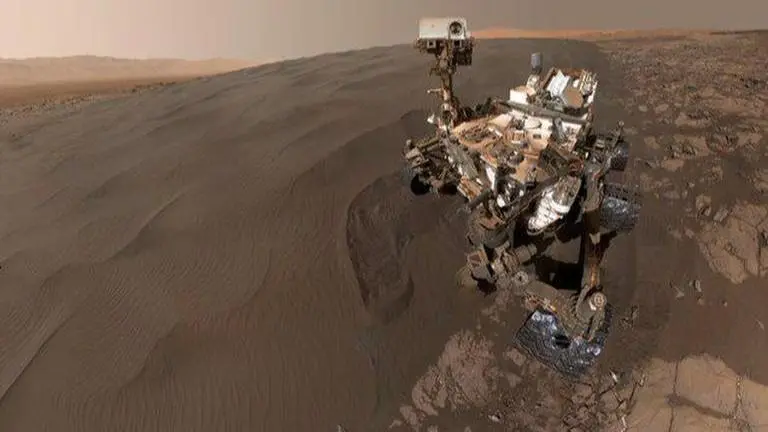Updated 18 January 2022 at 16:26 IST
NASA's Curiosity rover detects carbon signatures on Mars associated with life
NASA revealed that the samples were powdered rocks and the type of carbon detected is similar to the one which is associated with biological processes on Earth.
- Science News
- 2 min read

In what could prove to be a breakthrough finding, NASA’s Curiosity rover has detected carbon signatures in the rock samples that it scooped from Mars. NASA revealed that the Curiosity samples were powdered rocks and the type of carbon detected is similar to the one which is associated with biological processes here on Earth. However, the agency clarified that this finding does hint towards the evidence of ancient life as scientists have not yet found conclusive supporting evidence of ancient or current biology there. In order to confirm any presence of life, there must be a presence of sedimentary rock formations produced by ancient bacteria, or a diversity of complex organic molecules hinting towards life.
Paul Mahaffy, the former principal investigator of the Sample Analysis at Mars (SAM) said as per NASA's statement-
We’re finding things on Mars that are tantalizingly interesting, but we would really need more evidence to say we’ve identified life. So we’re looking at what else could have caused the carbon signature we’re seeing, if not life.
What do scientists make of the carbon signatures?
Scientists, in their report published in the Proceedings of the National Academy of Sciences, say that the current biological explanation for these carbon signatures is inspired by Earth. They explained that the conversion of methane, emerging from ancient bacteria, into carbon molecules after reaction with ultraviolet light might have made those molecules rain down and deposit on Martian rocks.
A second hypothesis suggests that the carbon signature could have resulted from the interaction of ultraviolet light with carbon dioxide gas in the Martian atmosphere. Whereas a third explanation says that the passing of the solar system through a giant molecular cloud, rich in the type of carbon detected, hundreds of millions of years ago. Christopher House, a Curiosity scientist and lead researcher said as per NASA's statement, "All three explanations fit the data. We simply need more data to rule them in or out."
Advertisement
However, he added that although the carbon-producing processes explained above are Earth-like and are biological, it remains to be seen if the same explanation works for Mars, or if there are other explanations.
Image: Twitter/@MarsCuriosity
Published By : Harsh Vardhan
Published On: 18 January 2022 at 16:26 IST
